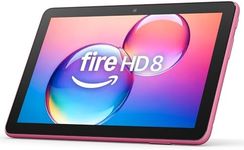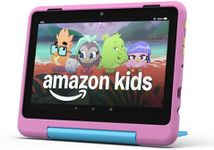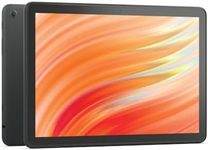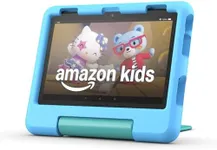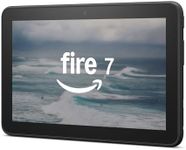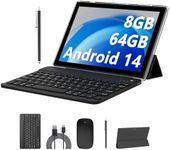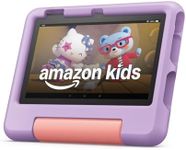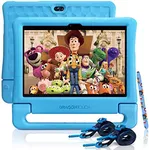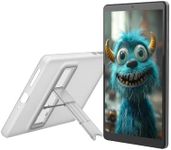Buying Guide for the Best Tablets Under 100 Dollars
When shopping for a tablet under $100, it's important to understand that while you may not get the top-of-the-line features, you can still find a device that meets your basic needs. The key is to focus on the specifications that matter most to you and ensure that the tablet you choose can handle the tasks you plan to use it for. Here are some key specs to consider and how to navigate them to find the best fit for you.Screen SizeScreen size refers to the diagonal measurement of the tablet's display. This spec is important because it affects how comfortable the tablet is to use for different activities. Smaller screens (7-8 inches) are more portable and easier to hold with one hand, making them great for reading or casual browsing. Larger screens (9-10 inches) provide a better viewing experience for watching videos, playing games, or multitasking. Choose a screen size based on how you plan to use the tablet most often.
ResolutionResolution indicates the number of pixels on the screen, which affects the clarity and sharpness of the display. Higher resolution means a clearer and more detailed image. For tablets under $100, you might find resolutions like 1024x600 or 1280x800. If you plan to watch videos or read a lot, aim for the highest resolution available within your budget to ensure a pleasant viewing experience.
ProcessorThe processor, or CPU, is the brain of the tablet and determines how fast and smoothly it can run apps and perform tasks. In budget tablets, you might find processors with lower clock speeds and fewer cores. For basic tasks like browsing the web, checking email, and streaming videos, a quad-core processor with a clock speed around 1.3-1.5 GHz should suffice. If you plan to use more demanding apps or multitask, look for a slightly faster processor if possible.
RAMRAM (Random Access Memory) affects how well the tablet can handle multitasking and run apps smoothly. More RAM allows for better performance, especially when switching between apps. Budget tablets typically come with 1GB to 2GB of RAM. For basic use, 1GB may be adequate, but if you want a smoother experience and plan to use multiple apps simultaneously, aim for 2GB of RAM.
StorageStorage capacity determines how much space you have for apps, photos, videos, and other files. Budget tablets often come with 8GB to 32GB of internal storage. If you plan to store a lot of media or download many apps, look for a tablet with at least 16GB of storage. Additionally, check if the tablet has a microSD card slot, which allows you to expand the storage capacity with an external memory card.
Battery LifeBattery life indicates how long the tablet can be used on a single charge. This is important if you plan to use the tablet on the go or for extended periods without access to a charger. Budget tablets may offer anywhere from 4 to 10 hours of battery life. Consider how you will use the tablet and choose one with a battery life that matches your needs. For example, if you plan to use it for long trips or all-day use, aim for a tablet with at least 8 hours of battery life.
Operating SystemThe operating system (OS) is the software that runs the tablet and determines the user interface and available apps. Common OS options for budget tablets include Android and Fire OS. Android offers a wide range of apps and customization options, while Fire OS, used in Amazon's Fire tablets, is more streamlined and integrated with Amazon services. Choose an OS based on your preference for app availability and ease of use.
Camera QualityCamera quality is measured in megapixels (MP) and affects the clarity of photos and videos taken with the tablet. Budget tablets often have lower-quality cameras, typically around 2MP to 5MP. If you plan to use the tablet for video calls or casual photography, a 2MP to 5MP camera should be sufficient. However, if camera quality is important to you, look for a tablet with a higher MP count within your budget.
